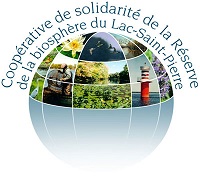Tessier, C. et Cattaneo, A. et Pinel-Alloul, B. et Hudon, C. et Borcard, D. (2008). Invertebrate communities and epiphytic biomass associated with metaphyton and emergent and submerged macrophytes in a large river. Aquatic Sciences , 70 (1). pp. 10-20. DOI: DOI: 10.1007/s00027-007-0920-3.
Ce document n'est pas hébergé sur Bibliothèque Électronique Lac Saint-Pierre.Résumé
The contribution of metaphyton and submerged and emergent macrophytes as support to phytophilous organisms was compared from the standpoint of epiphytic chlorophyll and of invertebrate biomass, taxonomic composition and size distribution. This study was carried out in a fluvial lake of the St. Lawrence River (Lac Saint-Pierre, Québec) at 5 sites with chemically and physically distinct water masses. Invertebrate and epiphyton biomass were consistently higher in complex filamentous mats (overall mean: 61 ± 5 [SE] mg and 124 ± 18 µg Chl a /g vegetation dry mass, respectively) and submerged plants (overall mean: 48 ± 7 mg and 195 ± 56 µg Chl a /g vegetation d.m.) than in the simple emergent stems (overall mean: 4 ± 1 mg and 45 ± 15 µg Chl a /g vegetation d.m.). Taxonomic composition of the invertebrate communities varied largely among types of vegetation and sites. Sampling site (and hence water physical and chemical characteristics) explained a larger fraction of the variation in invertebrate composition (28 %) than vegetation type (9 %). Overall, metaphyton hosted an invertebrate fauna more abundant and more diverse, with larger organisms and more semi-aquatic taxa, than that of nearby vascular macrophytes. However, at the scale of this river segment (∼ 300 km2), metaphyton contributed < 1 % to total phytophilous invertebrate biomass compared to 96 % and 4 % for submerged and emergent plants, respectively. In the river trophic network, vascular plants thus appear to support the bulk of the food supply, which is periodically enriched and diversified by the appearance of metaphyton blooms. © 2007 Eawag, Eidgenössische Anstalt für Wasserversorgung, Abwasserreinigung und Gewässerschutz.
| Type de document: | Article scientifique |
|---|---|
| Mots-clés libres: | Aquatic plants, Epiphyton, Filamentous algae, Phytophilous invertebrates, Redundancy analysis, St. Lawrence River |
| Sujets: | 3. Végétation, milieux humides 4. Faune > 4.1. Invertébré |
| Date de dépôt: | 23 août 2016 20:48 |
| Dernière modification: | 23 août 2016 20:48 |
| URI: | https://belsp.uqtr.ca/id/eprint/541 |
Gestion Actions (Identification requise)
 |
Dernière vérification avant le dépôt |

